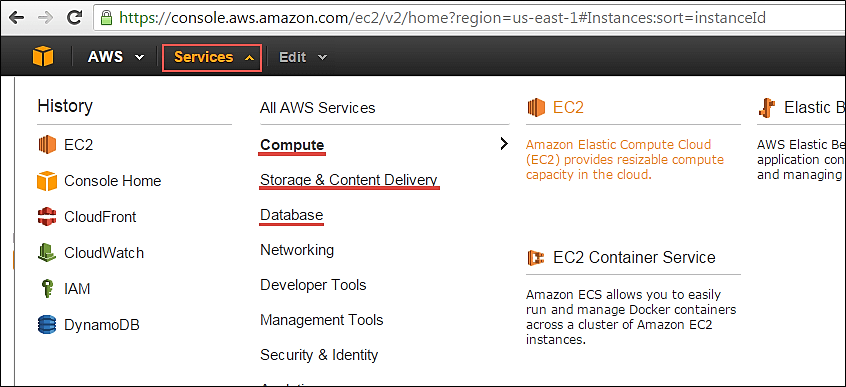The firmware package with the correctable error bug fix is 24.3.0-0083.
3. Verify the server's disks after firmware update and bring back online its services as follows:
Exadata Storage Servers (based on X5-2L and X6-2L):
i. Verify the 12 disks are visible. The following command should show 12 disks:
# lsscsi | grep -i LSI
[0:2:0:0] disk LSI MR9361-8i 4.23 /dev/sda
[0:2:1:0] disk LSI MR9361-8i 4.23 /dev/sdb
[0:2:2:0] disk LSI MR9361-8i 4.23 /dev/sdc
[0:2:3:0] disk LSI MR9361-8i 4.23 /dev/sdd
[0:2:4:0] disk LSI MR9361-8i 4.23 /dev/sde
[0:2:5:0] disk LSI MR9361-8i 4.23 /dev/sdf
[0:2:6:0] disk LSI MR9361-8i 4.23 /dev/sdg
[0:2:7:0] disk LSI MR9361-8i 4.23 /dev/sdh
[0:2:8:0] disk LSI MR9361-8i 4.23 /dev/sdi
[0:2:9:0] disk LSI MR9361-8i 4.23 /dev/sdj
[0:2:10:0] disk LSI MR9361-8i 4.23 /dev/sdk
[0:2:11:0] disk LSI MR9361-8i 4.23 /dev/sdl
ii. Activate the grid disks.
# cellcli -e alter griddisk all active
GridDisk DATA_CD_00_dmorlx8cel01 successfully altered
GridDisk DATA_CD_01_dmorlx8cel01 successfully altered
GridDisk RECO_CD_00_dmorlx8cel01 successfully altered
GridDisk RECO_CD_01_dmorlx8cel01 successfully altered
...etc...
iii. Verify all grid disks show 'active':
# cellcli -e list griddisk
DATA_CD_00_dmorlx8cel01 active
DATA_CD_01_dmorlx8cel01 active
RECO_CD_00_dmorlx8cel01 active
RECO_CD_01_dmorlx8cel01 active
...etc...
iv. Verify all grid disks have been successfully put online using the following command. Wait until
asmmodestatus is ONLINE for all grid disks. The following is an example of the output early in the
activation process.
# cellcli -e list griddisk attributes name,status,asmmodestatus,asmdeactivationoutcome
DATA_CD_00_dmorlx8cel01 active ONLINE Yes
DATA_CD_01_dmorlx8cel01 active ONLINE Yes
DATA_CD_02_dmorlx8cel01 active ONLINE Yes
RECO_CD_00_dmorlx8cel01 active SYNCING Yes
...etc...
Notice in the above example that RECO_CD_00_dmorlx8cel01 is still in the 'SYNCING' process. Oracle ASM
synchronization is only complete when ALL grid disks show ‘asmmodestatus=ONLINE’. This process can take
some time depending on how busy the machine is, and has been while this individual server was down for
repair.
Exadata DB Nodes (based on X5-2, X6-2 and X5-8)
Linux DB Nodes:
i) Verify all the disks are visible to the system and in 'normal' status.
# dbmcli -e "list physicaldisk"
252:0 F1HHYP normal
252:1 F1K76P normal
252:2 F1GZ1P normal
252:3 F1K7GP normal
252:4 F1LHUP normal
252:5 F1A2JP normal
252:6 F1LH6P normal
252:7 F1LDSP normal
There should be 4 or 8 disks depending on the DB node model.
ii) Startup CRS and re-enable autostart of crs. After the OS is up, the Customer DBA should validate
that CRS is running. As root execute:
# . oraenv
ORACLE_SID = [root] ? +ASM1
The Oracle base for ORACLE_HOME=/u01/app/11.2.0/grid is /u01/app/oracle
# $ORACLE_HOME/bin/crsctl start crs
# $ORACLE_HOME/bin/crsctl check crs
Now re-enable autostart
# $ORACLE_HOME/bin/crsctl enable crs
or
# <GI_HOME>/bin/crsctl check crs
# <GI_HOME>/bin/crsctl enable crs
where GI_HOME environment variable is typically set to “/u01/app/11.2.0/grid” but will depend on the
customer's environment.
In the above output the “1” of “+ASM1” refers to the DB node number. For example, Db node #3
the value would be +ASM3.
Example output when all is online is:
# /u01/app/11.2.0/grid/bin/crsctl check crs
CRS-4638: Oracle High Availability Services is online
CRS-4537: Cluster Ready Services is online
CRS-4529: Cluster Synchronization Services is online
CRS-4533: Event Manager is online
iii) Validate that instances are running:
# ps -ef |grep pmon
It should return a record for the ASM instance and a record for each database.
OVM DB Nodes:
i) Verify all the disks are visible to the system and in 'normal' status.
# dbmcli -e "list physicaldisk"
252:0 F1HHYP normal
252:1 F1K76P normal
252:2 F1GZ1P normal
252:3 F1K7GP normal
252:4 F1LHUP normal
252:5 F1A2JP normal
252:6 F1LH6P normal
252:7 F1LDSP normal
There should be 4 or 8 disks depending on the DB node model.
ii) Re-enable user domains to autostart during Domain-0 boot:
# chkconfig xendomains on
iii) Startup all user domains that are marked for auto start:
# service xendomains start
iv) See what user domains are running (compare against result from previously collected data):
# xm list
Name ID Mem VCPUs State Time(s)
Domain-0 0 8192 4 r----- 409812.7
dm01db01vm01 8 8192 2 -b---- 156610.6
dm01db01vm02 9 8192 2 -b---- 152169.8
v) if any did not auto-start then Startup a single user domain:
# xm create -c /EXAVMIMAGES/GuestImages/DomainName/vm.cfg
vi) Check that CRS has started in user domains:
a) Connect to each domain using the command:
# xm console domainname
where domainname would be dm01db01vm01 or dm01db01vm02 if using the above examples.
b) Any instances of CRS on that domain should have automatically started:
# . oraenv
ORACLE_SID = [root] ? +ASM1
The Oracle base for ORACLE_HOME=/u01/app/11.2.0/grid is /u01/app/oracle
# $ORACLE_HOME/bin/crsctl check crs
CRS-4638: Oracle High Availability Services is online
CRS-4537: Cluster Ready Services is online
CRS-4529: Cluster Synchronization Services is online
CRS-4533: Event Manager is online
c) Validate that instances are running:
# ps -ef |grep pmon
It should return a record for the ASM instance and a record for each database.
d) Press CTRL+] to disconnect from the console.
vii) Repeat step (vi) on each running domain.
4. Repeat the above steps to update the firmware on each storage server and DB node, as needed.
NOTE: If updating firmware on multiple storage server in a rolling manner, do not reboot and apply the
firmware update to multiple storage servers at the same time - only do them one at a time and ensure all disks
are re-synchronized with ASM completely before proceeding to the next storage server.
If the image is version 12.1.2.3.0 or later, then the procedure is complete. The following additional steps are 
